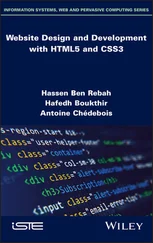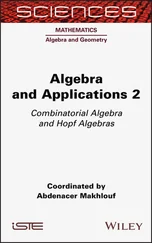1 ...8 9 10 12 13 14 ...25 7 7. Bubble cap trays are used only when liquid level must be maintained at low turndown ratio; they can be designed for lower pressure drop than either sieve or valve trays.
8 8. Weir heights are 50 mm (2 in.), weir lengths are about 75% of trays diameter, and liquid rate a maximum of about 1.2 m3/min-m of weir (8 gpm/in. of weir); multi-pass arrangements are used at higher liquid rates.
1 1. Structured and random packings are suitable for packed towers less than 0.9 m (3 ft) when low pressure drop is required.
2 2. Replacing trays with packing allows greater throughput and separation in existing tower shells.
3 3. For gas rates of 14.2 m3/min (500 ft3/min), use 25.4-mm (1-in.) packing; for 56.6m3/min (2000 ft3/min) or more use 50-mm (2-in.) packing.
4 4. Ratio of tower diameter/packing diameter should be > 15/1.
5 5. Because of deformability, plastic packing is limited to 3–4 m (10–15 ft) and metal packing to 6.0–7.6 m (20–25 ft) unsupported depth.
6 6. Liquid distributors are required every 5–10 tower diameters with pall rings and at least every 6.5 m (20 ft) for other types of dumped packing.
7 7. Number of liquid distributions should be >32–55/m2 (3–5/ft2) in towers greater than 0.9 m (3 ft) diameter and more numerous in smaller columns.
8 8. Packed towers should operate near 70% of the flooding rate (evaluated from Sherwood and Lobo correlation).
9 9. Height Equivalent to a Theoretical Stage (HETS) for vapor–liquid contacting is 0.4–0.56 m (1.3–1.8 ft) for 25-mm (1-in.) pall rings and 0.76–0.9 m (2.5–3.0 ft) for 50-mm (2-in.) pall rings.
10 10.Generalized pressure dropsDesign pressure drops (cm of H2O/m of packing)Design pressure drops (in. of H2O/ft of packing)Absorbers and Regenerators (non-foaming systems)2.1–3.30.25–0.40Absorbers and Regenerators0.8–2.10.10–0.25Atmospheric/Pressure Stills and Fractionators3.3–6.70.40–0.80Vacuum Stills and Fractionators0.8–3.30.10–0.40Maximum value8.331.0
DRIVERS AND POWER RECOVERY EQUIPMENT
1 1. Efficiency is greater for larger machines. Motors, 85–95%; steam turbines, 42–78%; gas engines and turbines, 28–38%.
2 2. For under 74.6 kW (100 hp), electric motors are used almost exclusively. They are made for up to 14,900 kW (20,000 hp).
3 3. Induction motors are most popular. Synchronous motors are made for speeds as low as 150 rpm and are thus suited, for example, for low-speed reciprocating compressors, but are not made smaller than 50 hp. A variety of enclosures are available, from weather-proof to explosion-proof.
4 4. Steam turbines are competitive above 76.6 kW (100 hp). They are speed-controllable. They are frequency used as spares in case of power failure.
5 5. Combustion engines and turbines are restricted to mobile and remote locations.
6 6. Gas expanders for power recovery may be justified at capacities of several hundred hp; otherwise any pressure reduction in a process is done with throttling valves.
7 7. The following useful definitions are given:
1 1. Drying times range from a few seconds in spray dryers to 1 h or less in rotary dryers and up to several hours or even several days in tunnel shelf or belt dryers.
2 2. Continuous tray and belt dryers for granular material of natural size or pelleted to 3–15 mm have drying in the range of 10–200 min.
3 3. Rotary cylindrical dryers operate with superficial air velocities of 1.52–3.05 m/s (5–10 ft/s), sometimes up to 10.67 m/s (35 ft/s) when the material is coarse. Residence times are 5–90 min. Holdup of solid is 7–8%. An 85% free cross section is taken for design purposes. In countercurrent flow, the exit gas is 10–20°C above the solid; in parallel flow, the temperature of the exit solid is 100°C. Rotation speeds of about 4 rpm are used, but the product of rpm and diameter in feet is typically between 15 and 25.
4 4. Drum dryers for pastes and slurries operate with contact times of 3–12 s, and produce flakes 1–3 mm thick with evaporation rates of 15–30 kg/m2-h. Diameters are in the range of 1.5–5.0 ft; and rotation rate is 2–10 rpm. The greatest evaporative capacity is of the order of 1360.7 kg/h (3000 lb/h) in commercial units.
5 5. Pneumatic conveying dryers normally take particles 1–3 mm diameter but up to 10 mm when the moisture is mostly on the surface. Air velocities are 10–30 m/s. Single-pass residence times are 0.5–3.0 s, but with normal recycling the average residence time is brought up to 60 s. Units in use range from 0.2 m in diameter by 1 m long to 0.3 m in diameter by 38 m long. Air requirement is several SCFM per lb of dry product/h.
6 6. Fluidized bed dryers work best on particles of a few tenths of a mm in diameter, but particles of up to 4 mm in diameter have been processed. Gas velocities of twice the minimum fluidization velocity are a safe prescription. In continuous operation, drying times of 1–2 min are enough, but batch drying of some pharmaceutical products employs drying times of 2–3 h.
7 7. Spay dryers: Surface moisture is removed in about 5 s, and most drying is completed in less than 60 s. Parallel flow of air and stock is most common. Atomizing nozzles have openings 3–3.8 mm (0.012–0.15 in.) and operate at pressures of 21–276 bar (300–4000 psi). Atomizing spray wheels rotate at speeds of 20,000 rpm with peripheral speeds of 76.2–183 m/s (250–600 ft/s). With nozzles, the length-to-diameter ratio of the dryer is 4–5; with spray wheels, the ratio is 0.5–1.0. For the final design, the experts say, pilot tests in a unit of 2 m diameter should be made.
1 1. Long tube vertical evaporators with either natural or forced circulation are most popular. Tubes are 19–63 mm (0.75–24.8 in.) in diameter and 3.66–9.14 m (12–30 ft) long.
2 2. In forced circulation, linear velocities in the tubes are in the range of 4.57–6.09 m/s (15–20 ft/s).
3 3. Elevation of boiling point by dissolved solids results in temperature differences of 3–10°F between solution and saturated vapor.
4 4. When the boiling point rise is appreciable, the economic number of effects in series with forward feed is 4–6.
5 5. When the boiling point rise is small, minimum cost is obtained with 8–10 effects in series.
6 6. In backward feed the more concentrated solution is heated with the highest temperature steam so that heating surface is lessened, but the solution must be pumped between stages.
7 7. The steam economy of an N-stage battery is approximately 0.8 N-lb evaporation/lb of outside steam.
8 8. Interstage steam pressures can be boosted with steam jet compressors of 20–30% efficiency or with mechanical compressors of 70–75% efficiency.
EXTRACTION, LIQUID–LIQUID
1 1. The dispersed phase should be the one that has the higher volumetric rate, except in equipment subject to back-mixing where it should be the one with the smaller volumetric rate. It should be the phase that wets the material of construction less well. Since the holdup of continuous phase is greater, that phase should be made up of the less expensive or less hazardous material.
2 2. There are no known commercial applications of reflux to extraction processes, although the theory is favorable.
3 3. Mixer–settler arrangements are limited to at most five stages. Mixing is accomplished with rotating impellers or circulating pumps. Settlers are designed on the assumption that droplet sizes are about 150 µm in diameter. In open vessels, residence times of 30–60 min or superficial velocities of 0.15–0.46 m/min (0.5–1.5 ft/min) are provided in settlers. Extraction-stage efficiencies commonly are taken as 80%.
Читать дальше












